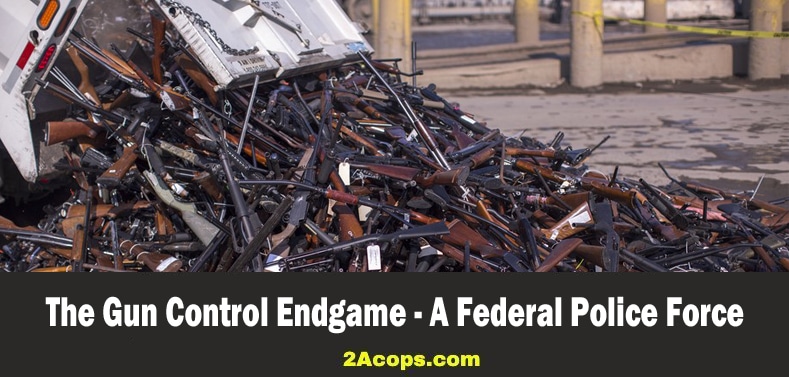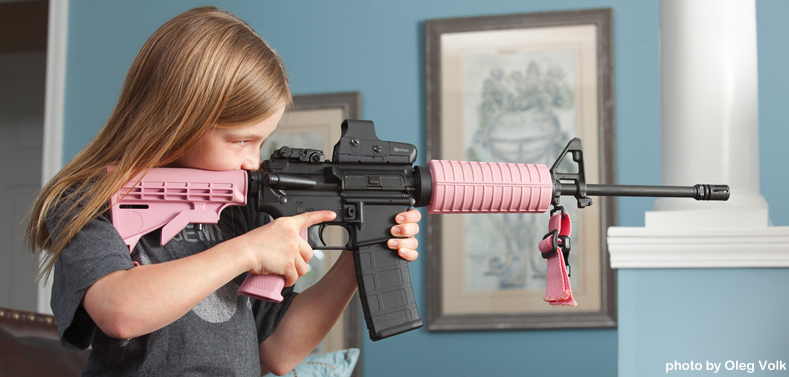Again, the headline above lists two of the legal points being asserted by supporters of gun control, not me. As for me, I realize both of those comments are completely ridiculous. In California’s legal motion for summary judgement in the lawsuit (Rupp v. Becerra) which will hopefully overturn CA’s unconstitutional assault weapons ban, CA claims that AR-15’s are not covered by the second amendment because they look like an M16 and thus are a military weapon, and that they are also not covered by the second amendment because they are not commonly owned by private citizens. This is the second piece in my series in which I plan to address all the patently false claims California is making as they scramble to defend their unconstitutional laws.

First, let me address CA’s claim that the AR-15 is a military weapon, or more specifically, that because it looks like a military weapon it should be considered the same thing. Specifically, when referring to cherry picked pieces from the Heller decision, they said:
Assault rifles regulated under the AWCA (Assault Weapons Control Act) fall outside the scope of the Second Amendment because they are, “like” the M16*, “most useful in military service.”
(* Please note, throughout their legal motion, the state cannot even be consistent in their labeling of the very things they are using as legal justification. They flip back and forth between M16 and M-16.)
They follow that statement by using two other circuit court rulings in support of their argument. The problem is, those circuit court rulings are based on factually incorrect assertions. Both cited circuit court rulings upheld the government’s claims that the AR-15 was a weapon that is “most useful in military service.”
The problem with that claim lies in the fact that not a single military on the planet uses the AR-15. A number of militaries use the M16 which is cosmetically similar to the AR-15, but differs greatly from a mechanical standpoint.
To the untrained eye, a 1984 Pontiac Fiero with a Ferrari F355 body kit installed looks quite a bit like the real Ferrari F355, just like a $550 Rolex Submariner replica looks strikingly similar to the $10,000 real thing, but as we all know, they are not remotely the same thing. For the life of me, I cannot imagine anyone attempting to legally argue the replicas are the same as the real items, yet that is the exact legal argument being offered as evidence against the AR-15.
The AR-15 and other assault rifles restricted by the AWCA have a military pedigree and are nearly identical to the M-16*.
They say this like it proves the AR-15 and the M16 are the same thing. In fact, every firearm on the planet has a military pedigree, including the muskets that were used by the framers of the constitution to not only shake off oppressive British rule, but also to put food on their tables.
Just because something shares a common pedigree does not make them the same. The M16 rifle and the AR-15 differ significantly mechanically in that the AR-15 is semi-auto only, where as the M16 is selectfire, meaning it can also fire in full-auto or burst mode. That ability to use full-auto or burst fire modes is why the military uses the M16, and not the AR-15.
In fact, the state admits this distinct difference, but immediately follows that by saying it doesn’t matter.
The primary difference between the M-16 and the AR-15 is that the M-16 is a select-fire rifle that allows the shooter to fire in either automatic or semiautomatic mode, while the AR-15 fires only in semiautomatic mode. This is not a material difference.
In order for something to be deemed “most useful in military service,” would it not stand to reason that the item in question would have to actually be used in military service, by at least one military?
This is not about gut feelings, looks or emotions. Legal decisions are not supposed to be about feelings. Case law and court rulings are supposed to be about facts, and the fact is, the semi-auto AR-15 is absolutely not “most useful in military service,” nor are all the other semi-auto weapons that are covered under California’s assault weapons ban.
The second part of my argument concerns California’s claim that the “assault weapons” they have banned, which include the AR and the AK families of firearms as well as many others, which have been available to the public since the early 1960’s, are not “commonly owned.” I find it extremely ironic that California, in their legal argument to maintain their assault weapons ban points out that they are not plentiful in California, where they are banned.
California has accurate data on lawful assault-rifle ownership because the state had required owners of assault rifles to register those firearms to maintain lawful possession before the rifles become restricted. As of November 2, 2018, there were approximately 166,640 assault rifles registered in California.
That has to be the dumbest circular logic argument I’ve seen since the scene from Monty Python and the Holy Grail where they determined the woman was a witch.
Even if we ignore that whole circular logic thing, let us take a look at their numbers. According to California, as of November 2018, there were 166,640 registered assault weapons in the state. I am not remotely sure I trust those numbers, because according to one article, prior to 2001, there were more than 145,000 guns grandfathered in under the AWB, and according to another article, nearly 69k more people attempted to register bullet button equipped rifles that were required to be registered as assault weapons under a law enacted in 2016, so the math is far from adding up, but we will just accept their number.
California is suggesting that 166,640 assault weapons is a insignificant number because the population of the state is so high. On one hand, the state argues that if a law can save only one life, while infringing on everyone’s rights, it is worth it, BUT on the other hand, they are suggesting that 166,640 is an insignificant number of people. That logic just does not track.
Now, how about that number? Is 166,640 a reasonable number just because that is how many assault weapons the state has registered?

New York passed the “SAFE Act” back in January, 2013. That law required owners to register rifles that fit their definition of “assault weapons.” As the final date came and went, New York was shocked by the massive amount of non-compliance to that new law.
The estimates were that roughly only 4% of the “assault weapons” in New York at that time got registered. I do not find that estimate unreasonable. Between people taking advantage of all the ways to legally convert “assault weapons” to a rifle that does not fit the criteria, and people refusing to comply because they are sick of the government trampling their rights, I find that 4% estimate to be reasonable.
Now, if we take that 4% compliance rate and apply that to California, then look at the 69k applications filed last year to register bullet button equipped assault rifles, throw in some basic math and we come away with approximately 1.7 million rifles in California that likely did not get registered. That is a far cry from the measly 166k that California wants the courts to consider.
Furthermore, using a state where assault weapons have been banned for 25 years as evidence that the very weapon banned is not commonly owned is ridiculously intellectually dishonest. When looking at the United States as a whole, the numbers change significantly.
While there is no official number, for many reasons, the conservative estimate is between 15-20 million “modern sporting rifles,” which would be classified as “assault weapons” according to California’s law. I suspect that number is probably closer to 30 million, but even if we take the lowest end of that estimate, it is logically impossible to argue that 15 million guns qualifies as “not commonly owned.”

There are always questions in the media about how many people own what type of guns. Back in 2016, ABC News ran a story about firearms sales. They looked at the number of new guns sold in the single month of June, 2016. They concluded the most popular rifle sold in the United States in that month was a S&W M&P15, which is an AR-15. In fact, four out of the top five selling rifles were all AR-15’s. It becomes increasingly hard to argue that they are “not commonly owned” when they are the number one selling rifle and there are tens of millions of them in private hands.
I’m not really sure what kind of defense California is putting together. The way in which they are disregarding facts which they themselves stated, employing mind boggling circular logic, using questionable math and the xenophobic manner in which they pretend what is common in the rest of the US somehow cannot be considered here has me wondering about the intelligence level of the people who prepared their legal argument.
If you like the content you see here, visit our home page for more articles, and remember to sign up for our newsletter.







